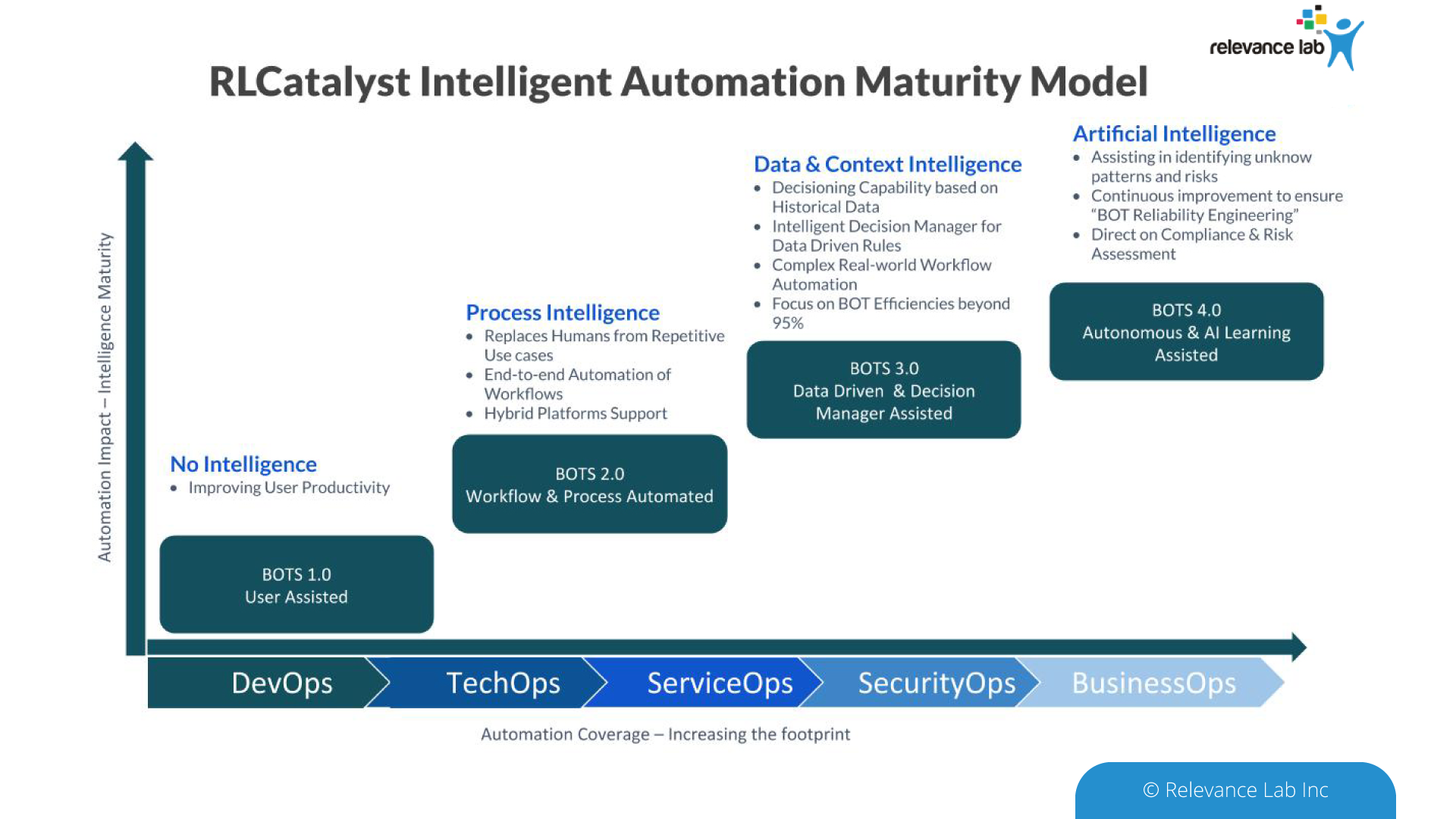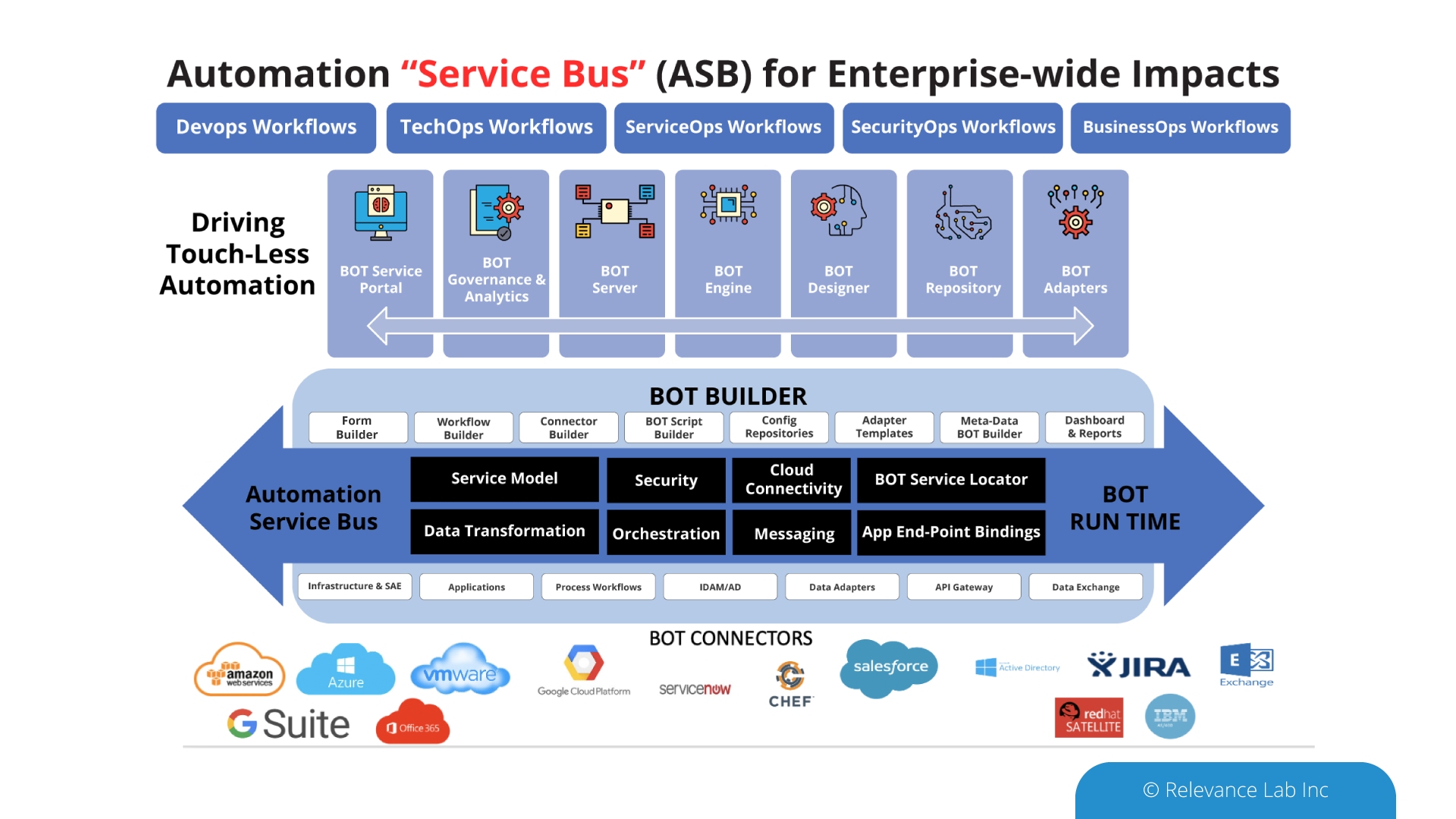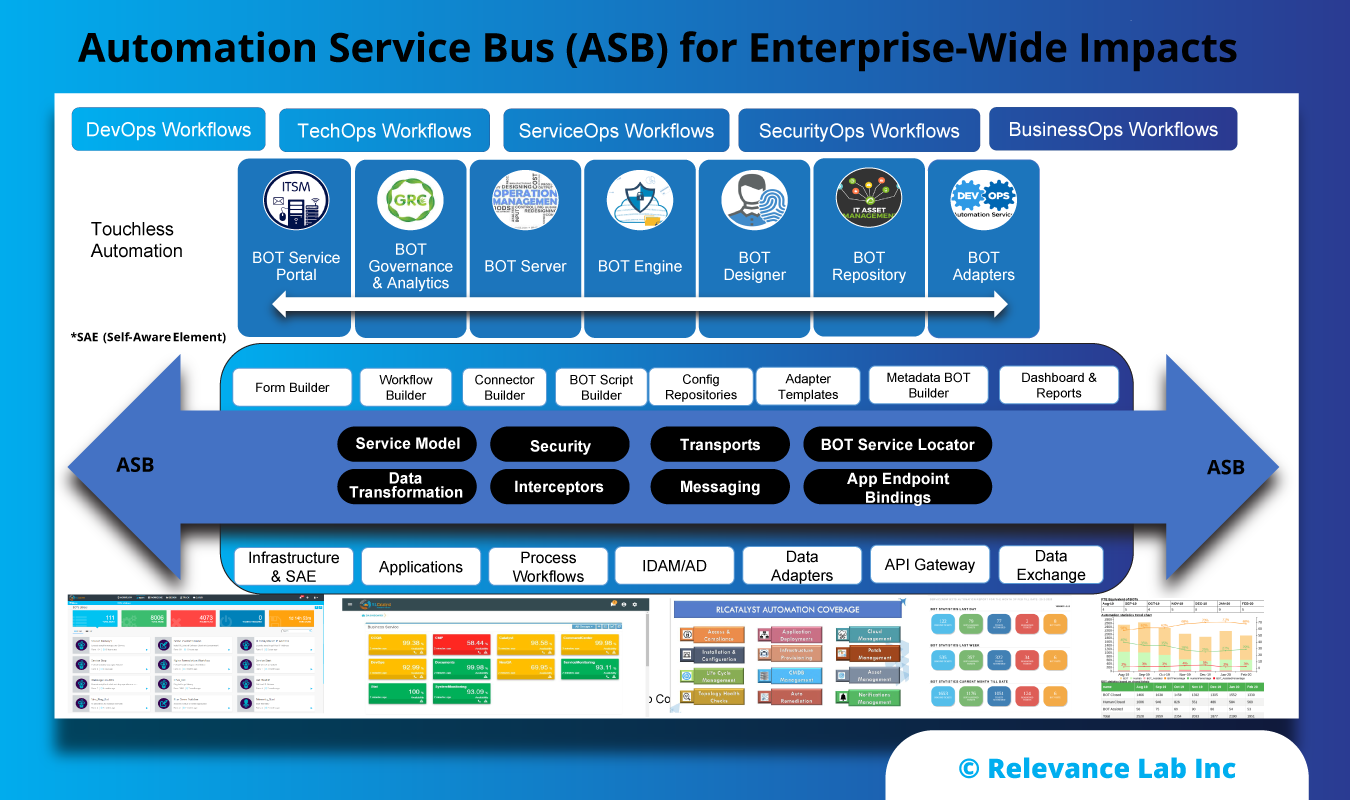2023 Blog, AI Blog, Blog, BOTs Blog, Featured
Relevance Lab is an Automation specialist company providing BOTs and Platforms for Business Processes, Applications, and Infrastructure. Our solutions leverage leading RPA (Robotic Process Automation) tools like UiPath, Automation Anywhere & Blue Prism. We provide re-usable templates for common use cases across Finance & Accounting, HR, IT, and Sales process automation.
By leveraging our robotic process automation services, our clients have realized:
- 60-80% cost savings
- 2-3x increase in process speed
- 35-50% increase in employee productivity
- Upto 30% FTE (Full Time Equivalent Headcount Reduction)
The biggest challenge in adoption of RPA for our customers primarily comes in identifying “where to start” dilemma. To help identify “what can be automated” we have designed the following guidelines to help with initial use cases for implementation:
- High frequency and volume workflows
- High complexity processes
- High error prone and human task quality related areas
- Domains with compliance needs with benefits of automated outcomes
Using these broad guidelines across a set of corporate functions we have commonly encountered the following use cases for RPA.
Finance & Accounting Automation
- Stock Price Update
- Purchase Order Process
- Reconciliation Process
- Payment Process
- Financial and Loan Origination Process
- Lease Accounting Process
- Journal Process
- Inventory Control Process
- Error Audit Process
- Invoice Process
Human Resources (HR) Automation
- New Hire Onboarding Process
- Data Approval Process
- The Policy Processing (TPP)
- Off-boarding Process
- Legacy (AS/400) Process
- Document Handling
- Employee/HR/IT Process
- User and Workspace- Employee/Contractor Offboarding
- Back to Office (COVID) workflow automation and compliances
Infrastructure (IT) Management Automation
- Distribution List Process
- User Account Re-conciliation Process
- Mailbox Automation & Reconciliation Process
- User Migration & Access Control Verification Process
- Logs Capture
Sales Automation
- Contract Data Extraction
- Sales Reporting
- Sales Reconciliation Process
- Material Edits Adjustments
With our comprehensive suite of RPA services, we have not only helped businesses adopt, but also maximize their investments in RPA.
The figure below explains the RPA Top Use Cases solved by Relevance Lab.
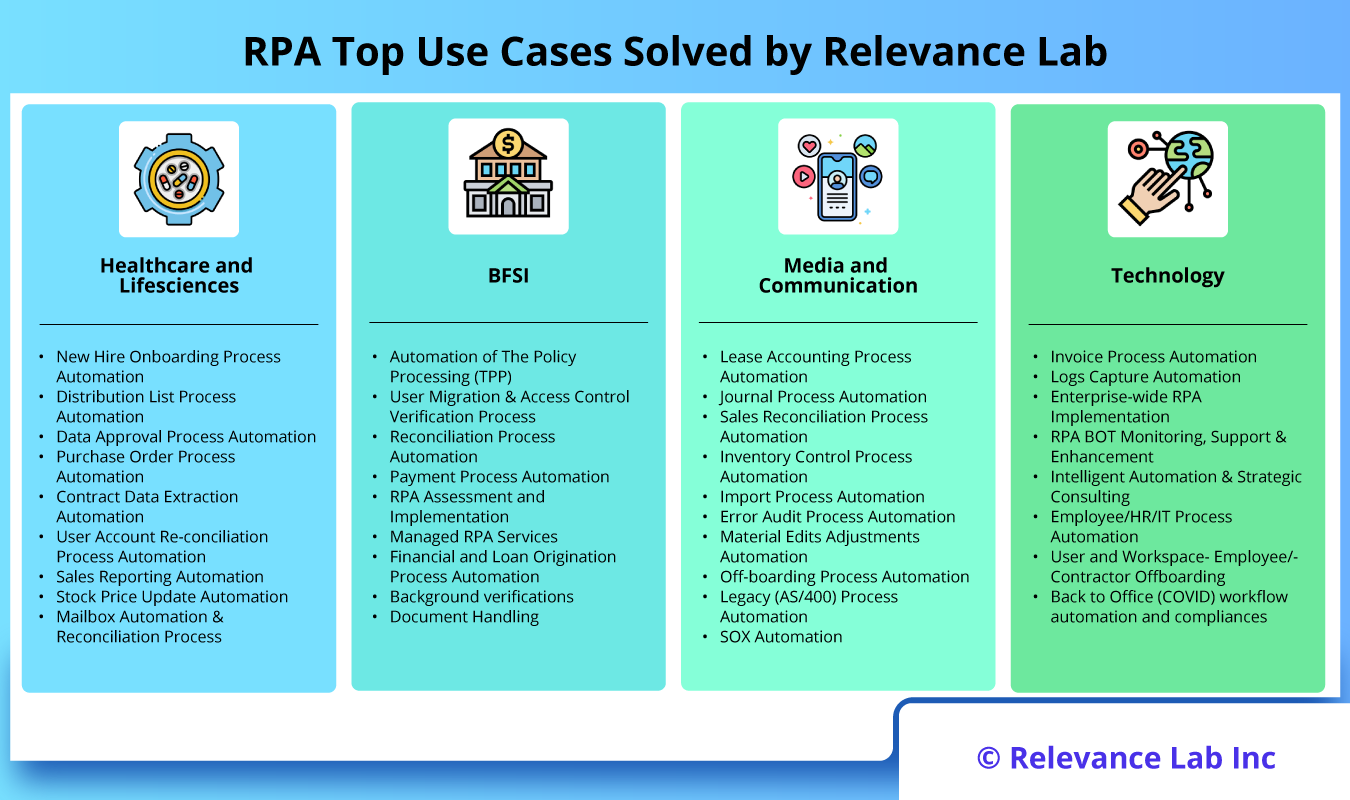
RL RPA Offerings
RPA Consulting/Assessment: RPA consulting and assessment is the process of evaluating organization’s processes and identifying opportunities for automation. It is essential for ensuring that RPA implementation is successful.
RPA Implementation: RPA implementation is the process of deploying and using RPA bots to automate processes. It is essential for realizing the benefits of RPA.
Automation Design: Automation design is the process of designing and implementing automation solutions. It involves understanding the business needs, identifying the processes that are suitable for automation, and designing and implementing the automation solutions.
Automation Support: Automation support is the process of providing support to users of automation solutions. It involves providing help with troubleshooting problems, resolving issues, and providing training on how to use the automation solutions.
The figure below explains our core offerings.

Relevance Lab “Automation-First” RPA Platform Architecture
Applications under Robotic Process Execution
RPA is well suited for enterprises and enterprise applications like ERP solutions (For example, SAP, Siebel, or massive data processing or records processing applications like Mainframes). Most of these applications are data-centric and also data-intensive with loads and loads of setup and repetitive process activities.
RPA Tools
- It has the ability to automate any type of application in any environment.
- Develop software robots that understand recordings, configuring, and enhancing these with programming logic.
- Build reusable components which can further be applied to multiple robots, ensuring modularity and faster development and at the same time easier maintenance.
RPA Platforms
Ability to develop meaningful analytics about robots and their execution statistics.
RPA BOT Workbench
RPA execution infrastructure can sometimes be a bank of parallel physical or virtual lab machines, which can be controlled based on usage patterns. Scaling up or down the number of machines in parallel to achieve the task of automation can also be done, and this can be left unattended for as long as you like (as this requires no further human interaction or intervention).
The figure below explains the Relevance Lab “Automation-First” RPA Platform Architecture.
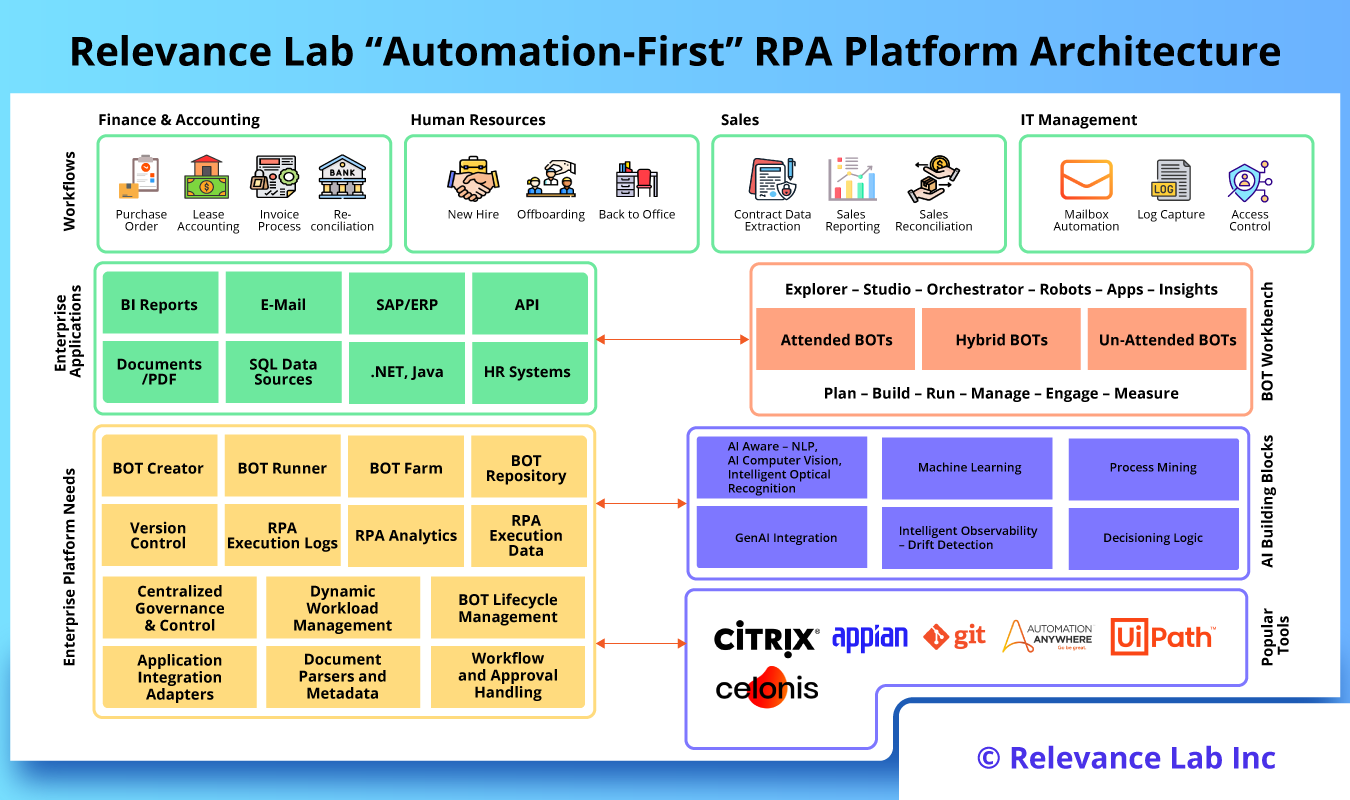
How to get started for new customers?
- Reach out to Relevance Lab (write to marketing@relevancelab.com) for a quick discussion and demonstration of the standard solution
- We will study the processes and help in identifying repetitive and manual tasks
- Engage in creation of POC while selecting the right RPA Tool
- Customers with standard needs can get started with a new setup in 4-6 weeks
- Relevance Lab will also provide on-going support and managed services
Summary
Relevance Lab Automation at a Glance
- RL has been Automation Specialist since 2016 (7+ Years).
- Implemented 30+ successful customer automation projects covering RPA lifecycle.
- Globally has 60+ RPA specialists with 150+ certifications.
- Automated over 100+ processes, which includes customized solutions for industries like across Healthcare, BFSI, Retail and Technology Services & Manufacturing.
References
CoE Manager|Automation Anywhere
Build Your Robotic Process Automation Center of Excellence (uipath.com)

